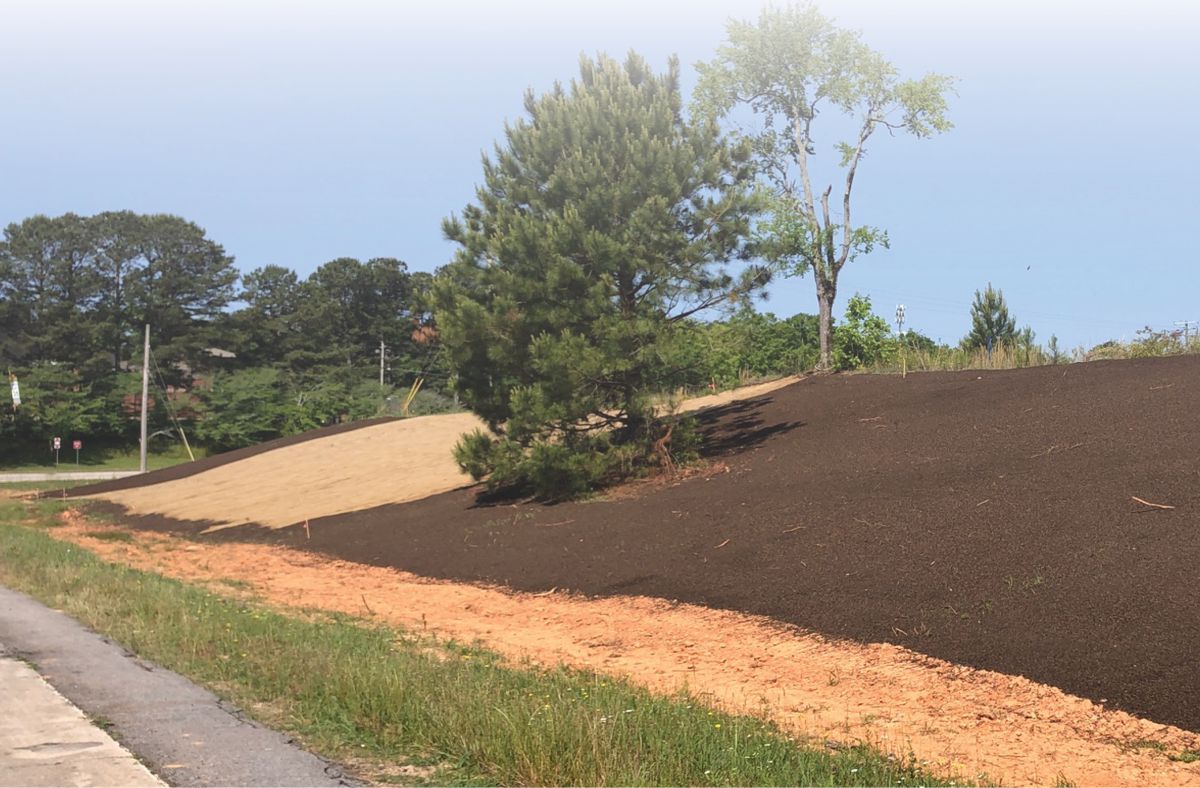Slope Stabilization Project in Georgia wrapped up by The Ray, GDoT and UGA
The Landscape Lab research team at The Ray has announced the completed installation of a slope stabilization research project at Exit 14 on I-85.
This project is the latest phase of research that is investigating new and more sustainable approaches to the design and maintenance of the highway right-of-way (ROW) in Georgia.
This project is a collaboration between The Ray, GDOT (Georgia DOT) and the UGA College of Environment and Design (UGA CED). The team also collaborated with Josh Weaver, Ph.D. and CPH, a lecturer/researcher in the Dept. of Horticulture at Auburn University, whose research focuses on biostimulants.
The slope research site at Exit 14 is approximately 19,600 square feet (0.45 acres) in size and is located at the corner of the exit ramp and US Route 27 near Troup County High School. The site is divided into five test areas where two different seed mixes, a new installation method known as Terraseeding®, and soil amendments are all being investigated. The research team is eager to study the effects of each of these mixes and methods on both seed mix establishment and health.
The seed mixtures feature native perennial grasses and flowers that do not need to be mowed on a frequent basis. Current roadside mixes utilize non-native turf grasses and are mowed at least four times per year. The mixes used in these tests utilize native species and only require one annual mowing to prevent tree saplings from being established.
Terraseeding® involves applying a 3-inch compost blanket to the previously cleared and graded slope without the use of heavy equipment on the site. The material is spread by blowing the seed mixture to desired areas through a series of hoses from a truck.
“We are excited to use Terraseeding at the Landscape Lab. This installation method is very scalable because it simplifies and speeds up the process of planting on slopes,” says Matthew Quirey, Landscape Lab and Research Fellow at The Ray.
Finally, the research is exploring the use of biochar and humic acid as soil amendments. These added materials have the potential to greatly improve the soil quality and growth of the seed mixes. Side-by-side comparisons will show which amendments work best and will inform future phases of the research.
“GDOT crews and equipment were the means by which the slope grading was accomplished,” according to District 3 Engineer, Tyler Peek. “Once again, GDOT staff show their skills in accomplishing this work, showing our continued collaboration with The Ray.”
“The state and southeast region need more tools in the toolkit for solving erosion problems on roadsides, and we now understand the important role our everyday landscapes play in providing pollinator habitat and contribution to the entire food chain,” says UGA Associate Professor, Brad Davis. “In short, the way we plant and manage our roadsides has a considerable impact on the environment. Experimentation with plant species and installation methods is helping to create more solutions using native species.”

Monitoring of the project site will take place over the next two growing seasons (2022 and 2023).




















